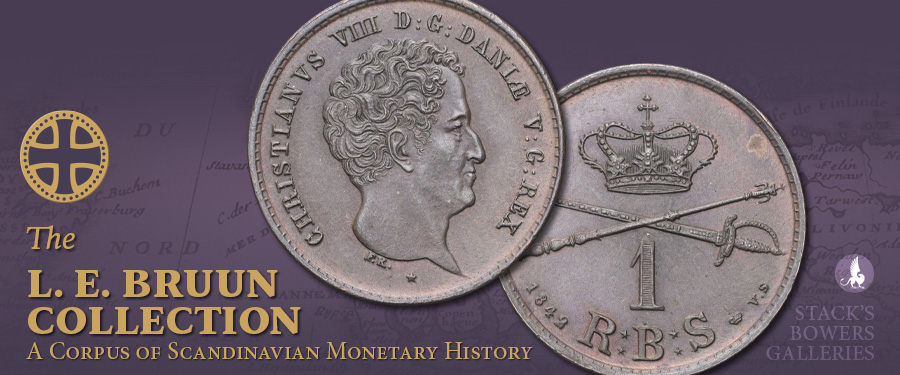
Christian VIII of Denmark, of great interest to numismatists for several reasons, ascended the throne in 1839 on the death of his cousin, Frederik VI, who did not sire a male heir.
On May 17 ,1814, when Christian was 27 and Governor-General of Norway, the Norwegians ratified their first constitution and elected him their king. While his Norwegian reign only lasted three months, May 17 is a public holiday, Constitution Day, and immensely important still. From the Norwegian yearning for independence sprung the idea of the ’17. Mai’ medals, which are collected with much enthusiasm by Norwegians and collectors of medals all over the world.
As prince (again) and later king of Denmark, Christian (VIII) was himself an eager collector of conch shells, antique vases, minerals, and of coins. His focus was on ancient coins, both Greek and Roman, and his collection of more than 10,000 pieces was sold to the Coin Cabinet upon his death in 1848.
Coins were struck with his portrait and/or cypher in Denmark and with his cypher on the coins of the Indian trade settlement of Tranquebar. While 20, 10 and 2 Skilling coins from the Danish West Indies from his reign exist, none bears his name or cypher.
In our upcoming second L. E. Bruun Collectors Choice Online (CCO) Auction, hammering on June 15, a beautiful copper Rigsbankskilling of 1842 is offered graded MS-64 BN. This “common man’s coin” is by no means a rarity; it’s quite common but very rarely seen in Mint State as it was used for everyday purposes and frequently changed hands.
When L. E. Bruun started his collection in 1859 this coin was only 17 years old, and one can imagine him finding this pristine example and saving it, even though it was at the time neither old nor prestigious.
Like Christian VIII, L. E. Bruun had many unique, rare and extremely expensive coins in his collection, but he never neglected the smaller denominations or the “common man’s coins.” It is a testament to the broadness of his numismatic interests and his sense of history (and perhaps also to the poverty he experienced growing up) that his collection holds so many coins which weren’t prestigious when he purchased them, but were part of a numismatic whole.





